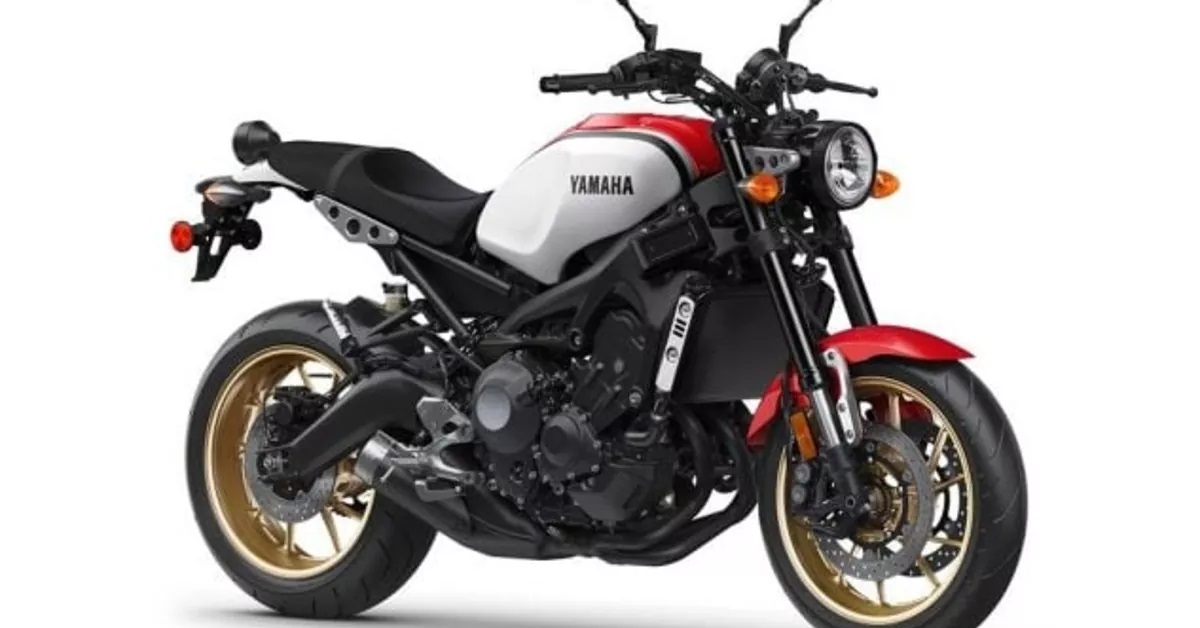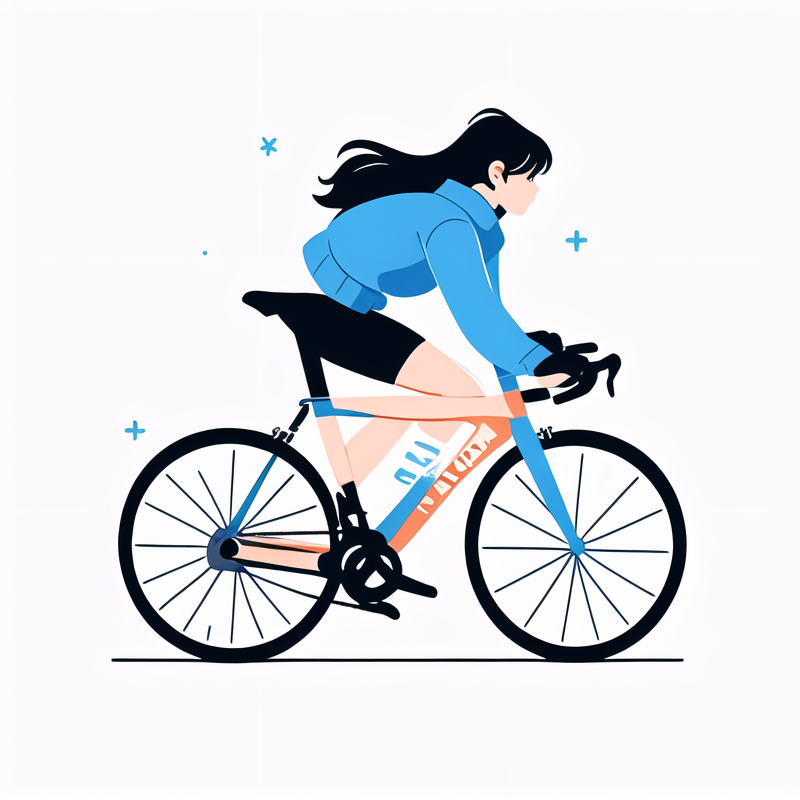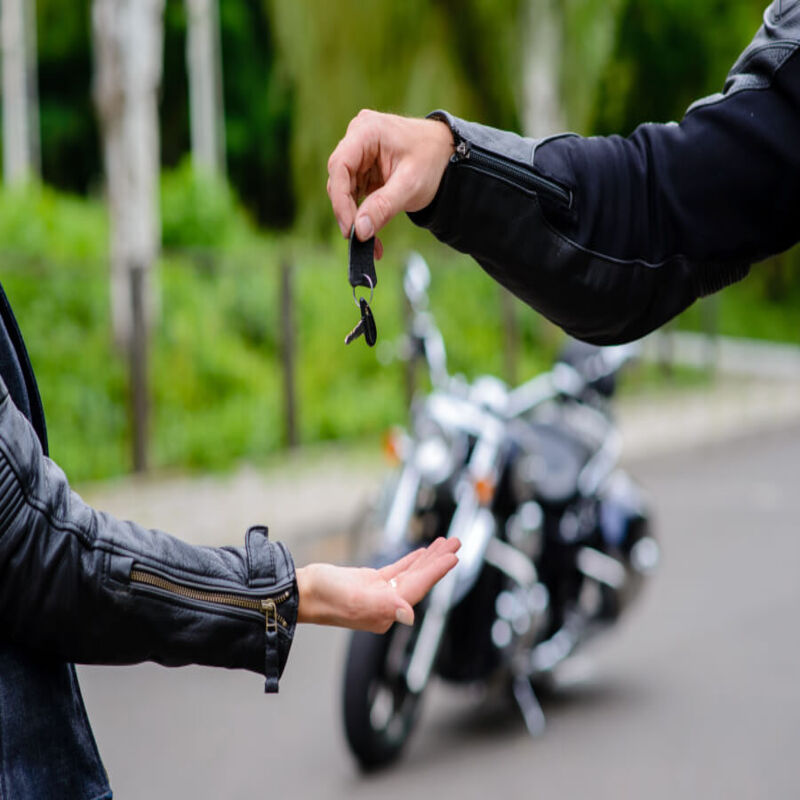Can You Jump a Motorcycle with a Car?
Understanding the Basics
Jump-starting a motorcycle with a car is a common question among motorcyclists, especially during those unfortunate times when the bike’s battery decides to die. The short answer is yes, you can jump-start a motorcycle with a car’s battery. However, there are several precautions and steps you need to follow to do it safely and effectively.
A motorcycle’s electrical system is quite different from that of a car. Generally, motorcycle batteries are smaller and have lower voltage compared to car batteries. This difference necessitates careful handling to prevent damage to the motorcycle’s electrical components. Moreover, understanding the basic principles of jump-starting is essential to avoid mishaps.
In essence, jump-starting involves connecting dead or low battery terminals temporarily to a charged battery using jumper cables. The charged battery helps to start the engine, infusing enough power to recharge the dead battery. When done correctly, this method can be a lifesaver, especially when stranded in the middle of nowhere.
However, improper handling can result in serious consequences like electrical system damage or even personal injury. Hence, it’s vital to know the correct procedures and follow safety precautions while attempting to jump-start a motorcycle with a car. Proper understanding will ensure you do not inadvertently cause harm or further problems.
Knowing the essentials of both the motorcycle and car’s electrical system will also help you feel more confident while performing this task. In this guide, we will delve deeper into the detailed steps and precautions you need to follow to jump-start your motorcycle using a car battery. Let’s explore the detailed process and tips for jump-starting a motorcycle with a car.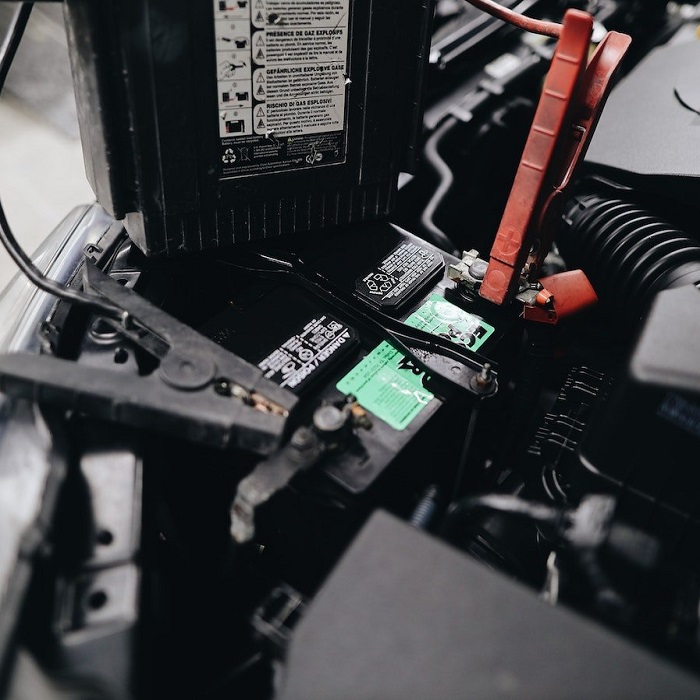
Why Consider Jump-Starting?
There are several reasons why your motorcycle battery might need a jump-start. One common reason is leaving the motorcycle’s lights on, which can quickly drain the battery. Additionally, prolonged periods of inactivity can also lead to a dead battery as motorcycles need to be run periodically to keep the battery charged.
Cold weather is another culprit that can significantly affect battery performance. In colder temperatures, a battery’s chemical reactions slow down, reducing its ability to hold a charge. Consequently, a fully charged battery might suddenly fail to start the engine in just a few days of cold weather.
Regular wear and tear can also contribute to battery depletion. Motorcycle batteries typically have shorter lifespans compared to car batteries. Over time, they lose their ability to hold a charge effectively and might require frequent jump-starts, especially if not maintained properly.
Understanding why a jump-start might be necessary helps in planning preventive measures. Regular battery maintenance, keeping the terminals clean, and occasional checkups can prolong a battery’s life. Despite all preventive measures, knowing how to jump-start is essential for every motorcyclist.
Moreover, jump-starting should be considered as a temporary solution. If your motorcycle constantly requires jump-starts, it’s crucial to diagnose and address the underlying issue. Checking the battery health and electrical system regularly can help identify if the battery needs replacement or if there’s an alternator problem.
By familiarizing yourself with these factors, you can manage and maintain your motorcycle more effectively. This knowledge ensures you’re prepared for any battery-related issues and can handle them efficiently. Armed with this understanding, let’s move on to the actual process involved in jump-starting your motorcycle with a car.
Preparing to Jump-Start
Gathering Necessary Equipment
Before attempting to jump-start your motorcycle using a car, gather all necessary equipment. Proper preparation is crucial to ensure a smooth and safe jump-starting process. Here’s a checklist of what you’ll need: jumper cables, both the motorcycle and car with fully charged batteries, and safety gear such as gloves and eye protection.
Using high-quality jumper cables is essential. They need to be in good condition with no exposed wires or frayed ends. Ensure the clamps are secure and can make a good connection with the battery terminals. Subpar cables can lead to inefficient jumps or even pose a safety risk.
Position both vehicles close enough so that the jumper cables can easily reach from one battery to the other. However, never let the vehicles touch each other during this process, as this can lead to electrical shocks or sparks. It’s also a good idea to perform the process in an open space to ensure ample ventilation and safety.
Turn off both the car and motorcycle before starting. Remove keys from the ignition to prevent any accidental startups during cable connection. Make sure all electrical accessories (lights, radios, etc.) in both vehicles are turned off. This step is vital to avoid any unnecessary power draw during the jump-starting process.
Wear safety gear to protect yourself from potential sparks or battery acid spills. Gloves and eye protection are recommended to ensure added safety. Take a moment to inspect both batteries for any visible damage, leaks, or corrosion. If you notice any severe damage or leaks, do not attempt to jump-start the vehicle.
Gathering the right equipment and ensuring both vehicles are properly prepared sets the foundation for a successful jump-start. Proper preparation ensures the process is smooth and safe, without any unexpected complications. By carefully following these preparatory steps, you can confidently proceed with the actual jump-start.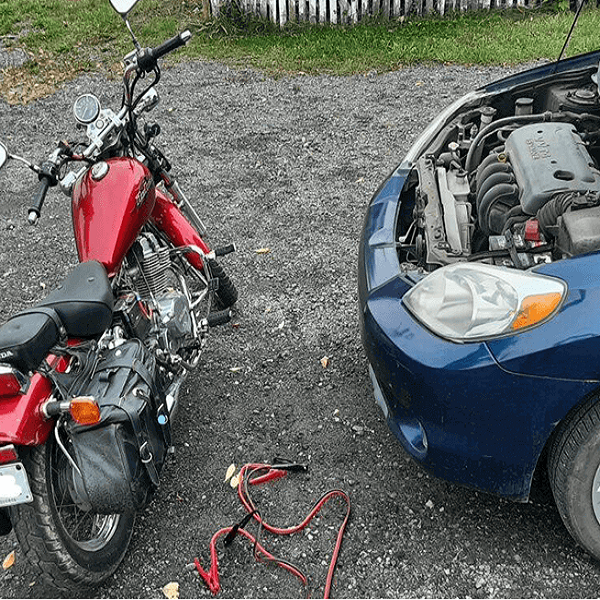
Safety Precautions
Safety is paramount when jump-starting a motorcycle with a car. Adhering to safety precautions minimizes the risk of injury and damage to the vehicles’ electrical systems. Begin by ensuring the vehicles are in a clear and well-ventilated area, reducing the risk of inhaling harmful fumes or causing a fire hazard.
Never smoke or allow open flames near the batteries during this process. Batteries emit flammable gases that can easily ignite, leading to explosions or fires. Additionally, keep any metallic objects away from the battery terminals to avoid accidental shorts and sparks.
If you notice any severe corrosion on the battery terminals, clean them gently using a wire brush or a mixture of baking soda and water. Cleaning the terminals ensures better contact and more efficient transfer of power. Be cautious and avoid touching both terminals simultaneously with the same tool, as this can cause shocks and sparks.
Always connect the jumper cables in the correct order to prevent short circuits and sparks. Attach the positive (red) clamp to the positive terminal of both batteries first, then connect the negative (black) clamp to the negative terminal of the car battery. Lastly, connect the other negative clamp to an unpainted metal surface of the motorcycle, away from the battery.
Double-check connections to ensure they are secure and correct. Incorrect connections can result in electric shocks, damage to the battery, or even more severe damage to the electrical system. Proceed with caution and confirm all connections before starting the jump-starting process.
Taking these safety precautions ensures a safer and more efficient jump-start. Adhering to these steps will protect you from potential hazards and safeguard both vehicles’ electrical systems. Proceeding with caution and attentiveness is key to a successful and safe jump-starting experience.
Jump-Starting Process
Connecting Jumper Cables
With the necessary equipment gathered and safety precautions in place, you’re ready to connect the jumper cables. First, locate the battery terminals on both the motorcycle and the car. Battery terminals are typically marked with a plus (+) sign for positive and a minus (-) sign for negative. Ensure you correctly identify these terminals before connecting the cables.
Start by attaching the positive (red) jumper cable clamp to the positive terminal of the motorcycle battery. Ensure the clamp is secure and makes good contact with the terminal. Next, connect the other end of the positive cable to the positive terminal of the car battery.
Now, connect the negative (black) jumper cable clamp to the negative terminal of the car battery. Ensure that this connection is also secure and stable. Finally, attach the other end of the negative cable to an unpainted metal surface on the motorcycle, away from the battery and fuel systems. This grounding step helps prevent sparks near the battery and reduces the risk of explosion.
Double-check all connections to ensure they are correct and secure. An incorrect connection can lead to electrical shorts or other complications. Once you have verified the connections, you are ready to proceed with the jump-starting process.
Starting the Car and Motorcycle
With the jumper cables securely connected, the next step is to start the car. Turn on the car and let it run for a few minutes. This step allows the car’s battery to transfer a charge to the motorcycle battery. Keep the car running to ensure continuous power flow during the jump-starting process.
After allowing the car to run for a few minutes, try starting the motorcycle. Turn the ignition key and listen for any signs of life. If the motorcycle engine cranks and starts, it indicates that the jump-start process is working. If the motorcycle does not start immediately, wait another few minutes and try again.
Once the motorcycle starts, keep it running to ensure the battery continues to charge. Disconnect the jumper cables in the reverse order of how you connected them. Begin by removing the negative (black) clamp from the motorcycle, followed by the negative clamp from the car. Next, remove the positive (red) clamp from the car battery, and finally, the positive clamp from the motorcycle battery.
Allow both the car and motorcycle to run for a while to ensure the motorcycle battery charges adequately. This step helps stabilize the charge and reduce the risk of the motorcycle dying again shortly after the jump-start.
Post-Jump-Start Tips
After successfully jump-starting your motorcycle, take a few additional steps to ensure everything runs smoothly. First, consider riding the motorcycle for at least 15-20 minutes. This ensures the battery charges adequately and reduces the chances of it dying again.
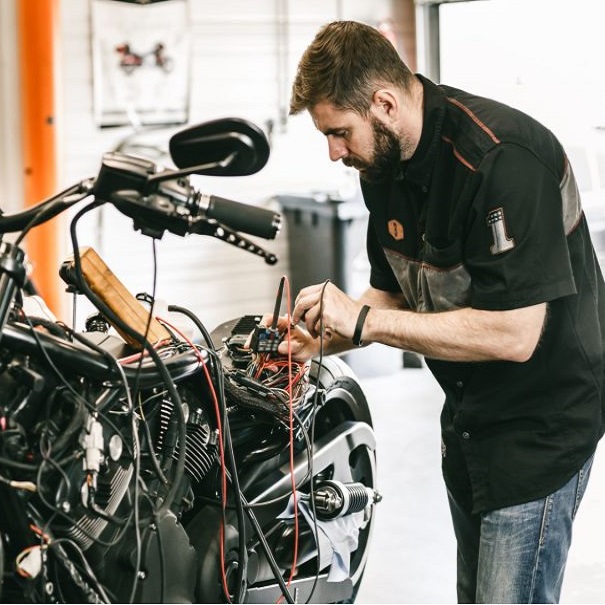
Monitor the performance of the motorcycle over the next few days. If you notice recurring issues with starting, it might indicate a more severe problem with the battery or the electrical system. In such cases, consult a professional mechanic to diagnose and address the issue.
Regularly check and maintain your motorcycle battery to prevent future jump-start needs. Ensure the terminals are clean, and the battery is properly secured. Keeping the battery charged, especially during periods of inactivity, can extend its lifespan and improve reliability.
Additionally, consider keeping a portable jump starter kit in your motorcycle’s storage compartment. These kits are compact, easy to use, and can save the day if you find yourself with a dead battery in an isolated location.
By following these post-jump-start tips, you can enhance the reliability and performance of your motorcycle. Regular maintenance and proactive measures ensure you are prepared for any battery-related issues in the future.
Jump-starting in 2024
In 2024, many motorcycle and car owners ask, “Can you jump a car with a motorcycle?” While that generally isn’t feasible due to the car’s higher power requirements, “can a car jump a motorcycle” has a positive answer. Jumping a motorcycle with a car is common and effective. If you need to jump a motorcycle with a car, follow the right steps.
Jump-starting with Different types of cars or motorcycles
However, can a motorcycle jump a car? Unfortunately, that’s not practical. Can you jump a motorcycle battery with a car battery? Yes, you can. Ensure both vehicles are turned off. For Harley riders, can you jump a Harley with a car? Yes, you can. The process is the same. Wondering, can you jump start motorcycle with car or can I jump a motorcycle battery with a car? Absolutely, you can.
Curious about how to jumpstart a motorcycle with a car? Connect the positive cables to both batteries and the negative cable to the car’s negative terminal and a metal part of the motorcycle. So, can u jump a motorcycle with a car? Yes, and jumpstart motorcycle with car easily by ensuring correct connections and procedures. Jump starting motorcycle with car is a handy skill for any rider to know.
Conclusion
Jump-starting a motorcycle with a car is a practical solution in emergencies, but it requires careful handling and adherence to safety precautions. Understanding the differences between the electrical systems of motorcycles and cars is essential for a successful jump-start.
Gathering the necessary equipment, following safety precautions, and adhering to the correct procedures are crucial steps in the jump-starting process. By taking these measures, you can safely and effectively revive your motorcycle battery using a car.
Post-jump-start, regular monitoring and maintenance of the motorcycle battery help prevent future issues and ensure reliable performance. Being prepared and knowledgeable allows you to handle battery-related challenges efficiently and confidently.
